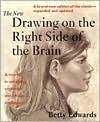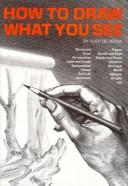Overall
Skills
Sketchbook
Digital
Tools
Digital:
- Krita
- One by Wacom Medium CTL-672
Physical:
- Lyra Rembrandt Art Design pencils
- Sakura Cray-Pas Oil Pastels
- uni Nano Dia 0.5, 2B & 4B Leads
- Zebra DelGuard 0.5 Mechanical pencil
- MONO Plastic Eraser
- NDK Cutter S-800
- Colleen Colour Pencil
- Cardboard viewfinder
- Cardboard colour wheel
Achievements
Drawing at:
- Home
- Park
- Mall
- Minibus
- Restaurant
- Beach
- Hospital
- Street
- Lecture Room
- Sports Centre
- Railway
- Library
- Art Museum
Finish a drawing using:
- Pencil
- Fineliner
- Willow charcoal
- Acrylic
- Coloured pencil
- Oil Pastel
- Ballpoint pen
- Rubber on charcoal
- Sand and stick
- Window and water vapour
- Printout images
Subject matter:
- Self-Portrait
- Portrait for others
- Avatar Icon
Collection














Andrew Loomis - Drawing the Head and Hands
Andrew Loomis - Figure drawing for all it’s worth
- Both are the classic books that often gets recommends until this day. They presents more examples than explanation so I still need to copy a lot more drawings of to get the most out of them.
Betty Edwards - The new drawing on the right side of the brain
- A very important book for beginners. It explains the reason why people draw badly is that they only draw symbols instead of what they actually see. Anyone could draw well once they know the knack.
Betty Edwards - Color : A Course in Mastering the Art of Mixing Colors
- Introduces the important concepts about colours: colour wheels, components of colour (hue, saturation and value), and how to actually mix them.
Charles Williams - Basic drawing : how to draw what you see
- Drawing doesn’t have to be masterpieces, it can be a dirty doodle drawn on boring lectures. In fact, the book said you don’t have to draw what you see. Most example shown are rough sketches, which makes it beginner-friendly.
Donna Krizek - Drawing and sketching secrets : 200 tips and techniques for drawing the easy way
- Introduces a lot of advanced techniques around many traditional media. It’s examples are all masterpieces so it’s not very useful to me yet.
Gilles Ronin - Le dessin en perspective a main levee
- Introduces the mathematical knowledge behind the construction of accurate shapes, shadows and perspective. It’s very interesting to learn the principles but not very useful to me for now since I don’t need this kind of precision.
James Hobbs - Sketch Your World
- Giving me the idea of outdoor sketching, which is much more interesting than drawing indoors. To me, drawing is the best way to spend outdoor time.
Mark Kistler - You can draw in 30 days : the fun, easy way to learn to draw in one month or less
- A true beginner’s book. It’s first lesson is to teach you how to draw a ball, then a cube, then a cylinder, then all the basic techniques in drawing. To me, the most brilliant technique introduced is smudging. Although any art teacher will tell you this is bad, this is much more beginner-friendly than cross-hatching, while the effect created is still stunning.
Mark Kistler - You can draw it in just 30 minutes : see it and sketch it in a half-hour or less
- The next book in the series, nothing special but still quite fun.
Rudy de Reyna - How to draw what you see
- Every object is a combination of spheres, cubes, cylinders and cones, really?
R. O. Dunlop, R.A - Painting for pleasure
- It recommends pastels as a good outdoor medium, although I later found out that it meant the powdery ones. Powdery pastels are more expensive and create a powdery mess. So I’m satisfied with the oily ones. It is another book that encourages beginners to do outdoor painting.
Sam Piyasena, Beverly Philp - Just draw it!
- It gives out lot of interesting ideas on creative art making, not bounded by traditional media.
趙巍岩, 陽佳, 楊萌 - Between object and subject : painting as a way to perceive and express
- It thoroughly discussed how should we practise drawing to learn our true styles. Artistic drawings are not likely to be eye candies. We draw not only what we see but beyond what we see.
































































































